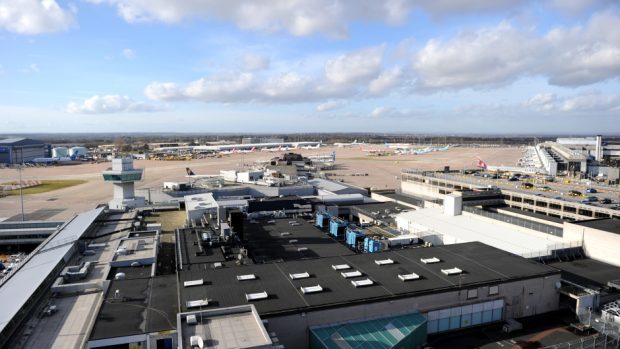A plane bound for Inverness had to turn back after two separate faults were found on the aircraft.
The problems left the plane’s controls “sloppy” and unresponsive, according to an official report.
The incident happened on November 6, 2015 on a Loganair-operated flight bound for the Highland capital from Manchester Airport.
The Air Accident Investigation Branch (AAIB) has now established that the plane suffered two separate faults.
One involved the 2000’s rudder trim position and the second the output from the left aileron – the hinged flap on the wing – position transducer.
The plane left Manchester at 4.30pm with 29 passengers on board.
The initial part of the flight was described as “uneventful” by crew but while under autopilot control the 42-year-old pilot noticed that the plane was at unusual angle for level flight.
A caution warning was then displayed on the flight controls indicating that there were “untrimmed forces in the aileron system”.
The ailerons on a plane are small movable surfaces on the wings used for control in flight.
The AAIB report into the incident states: “The PF (pilot) decided to disconnect the autopilot, bracing the controls for the jolt he expected when doing so with an aileron mistrim.
“The jolt was more pronounced than usual and he had difficulty maintaining straight and level flight, finding that the aileron controls felt ‘sloppy’ and unresponsive.”
The flight commander and his co-pilot tested the systems before ultimately making a “mayday” call as the problems meant any landing would have to be made with “compromised flight controls”.
The flight crew decided to return to Manchester and informed air traffic control the flight had limited turning capability.
Despite the problems the pilot was able to make a safe landing.
The AAIB examined the recorded information from the flight when considering the incident.
Thy found that the restriction of the rudder trim position prevented it from moving.
The AAIB was unable to determine the cause of the restriction.
A Loganair spokesman said: “We offered our full support during this investigation, and welcome the AAIB’s findings.
“The captain and first officer involved followed procedures and we fully support the decisions they made during the incident.
“All of our pilots regularly go through extensive training and Loganair prides itself on the excellent standards and quality of its pilot workforce.”
